Data Model Development and Implementation Report - MN405 T1 2018
VerifiedAdded on 2023/06/11
|8
|596
|269
Report
AI Summary
This report details the development and implementation of a data model, focusing on database entities, tables, and attributes. It outlines business rules, functional dependencies, and normalized tables, achieving 3NF. The report includes an ER diagram, MS-Access database implementation with participant, workshop, organizer, workshop participant, and meeting room tables. SQL queries are provided to demonstrate data retrieval, including workshop details and participant information. The document concludes with references to ER diagram resources, providing a comprehensive overview of the database design and implementation process. Desklib offers a wealth of similar solved assignments and past papers for students.
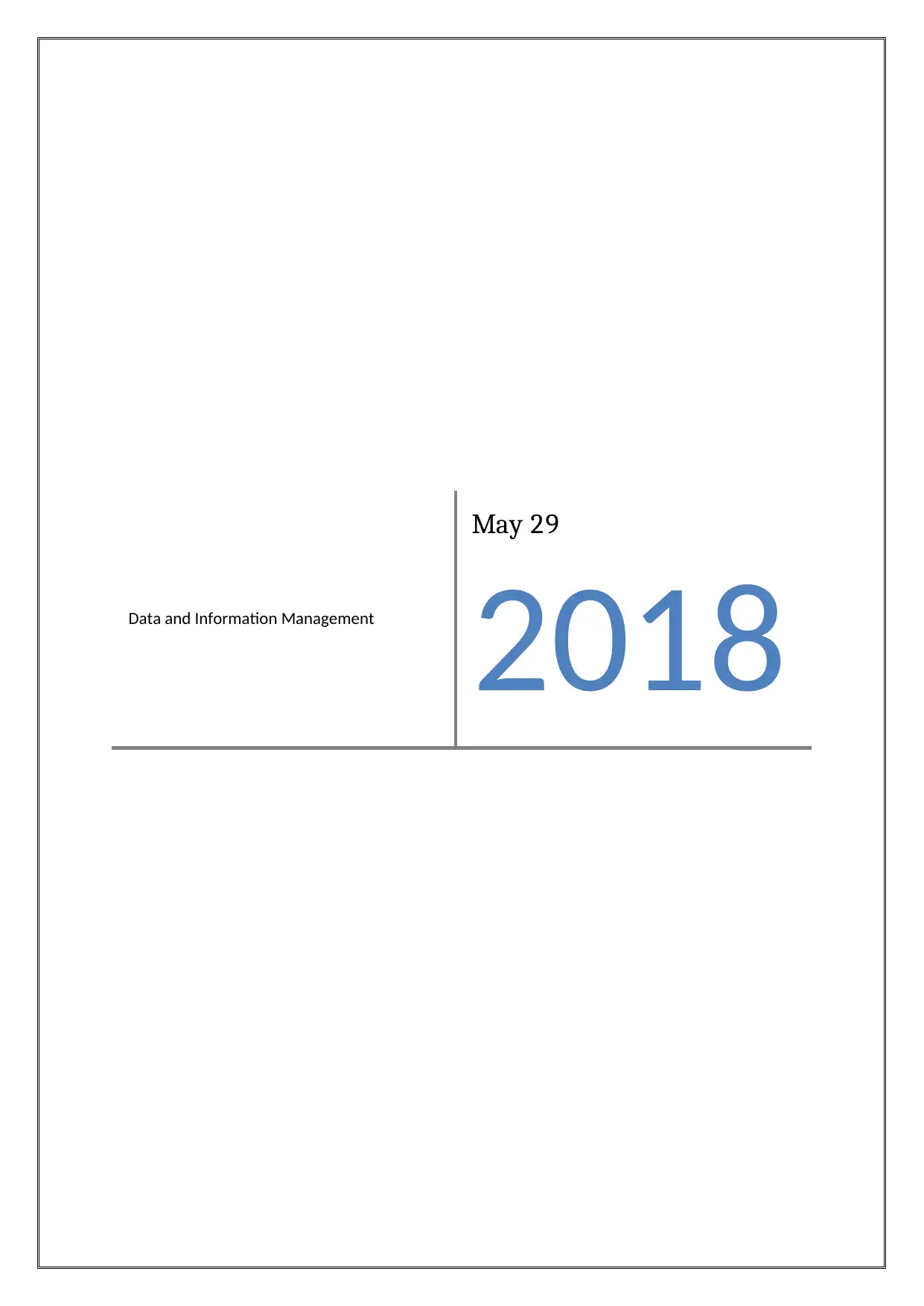
Data and Information Management
May 29
2018
May 29
2018
Paraphrase This Document
Need a fresh take? Get an instant paraphrase of this document with our AI Paraphraser
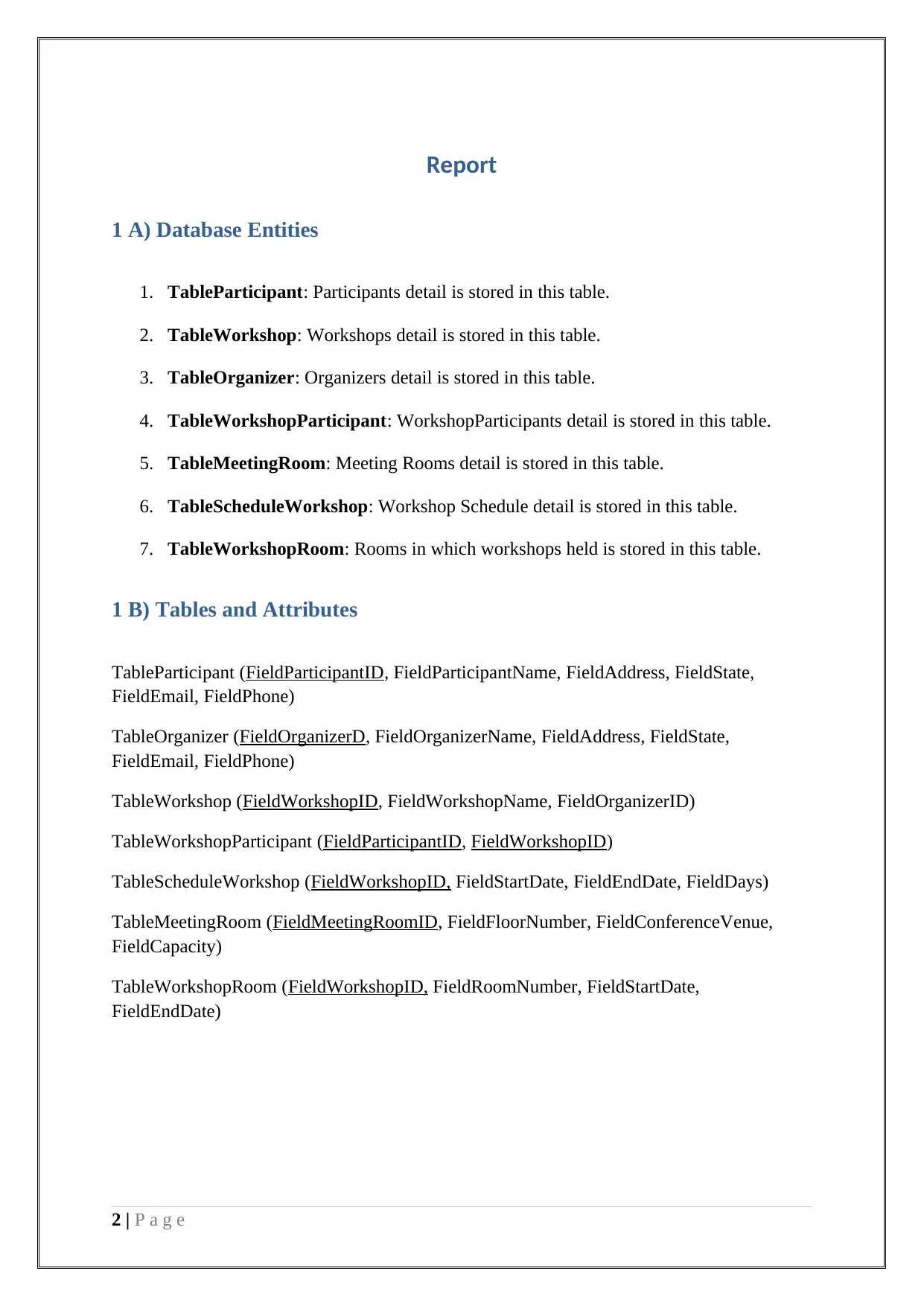
Report
1 A) Database Entities
1. TableParticipant: Participants detail is stored in this table.
2. TableWorkshop: Workshops detail is stored in this table.
3. TableOrganizer: Organizers detail is stored in this table.
4. TableWorkshopParticipant: WorkshopParticipants detail is stored in this table.
5. TableMeetingRoom: Meeting Rooms detail is stored in this table.
6. TableScheduleWorkshop: Workshop Schedule detail is stored in this table.
7. TableWorkshopRoom: Rooms in which workshops held is stored in this table.
1 B) Tables and Attributes
TableParticipant (FieldParticipantID, FieldParticipantName, FieldAddress, FieldState,
FieldEmail, FieldPhone)
TableOrganizer (FieldOrganizerD, FieldOrganizerName, FieldAddress, FieldState,
FieldEmail, FieldPhone)
TableWorkshop (FieldWorkshopID, FieldWorkshopName, FieldOrganizerID)
TableWorkshopParticipant (FieldParticipantID, FieldWorkshopID)
TableScheduleWorkshop (FieldWorkshopID, FieldStartDate, FieldEndDate, FieldDays)
TableMeetingRoom (FieldMeetingRoomID, FieldFloorNumber, FieldConferenceVenue,
FieldCapacity)
TableWorkshopRoom (FieldWorkshopID, FieldRoomNumber, FieldStartDate,
FieldEndDate)
2 | P a g e
1 A) Database Entities
1. TableParticipant: Participants detail is stored in this table.
2. TableWorkshop: Workshops detail is stored in this table.
3. TableOrganizer: Organizers detail is stored in this table.
4. TableWorkshopParticipant: WorkshopParticipants detail is stored in this table.
5. TableMeetingRoom: Meeting Rooms detail is stored in this table.
6. TableScheduleWorkshop: Workshop Schedule detail is stored in this table.
7. TableWorkshopRoom: Rooms in which workshops held is stored in this table.
1 B) Tables and Attributes
TableParticipant (FieldParticipantID, FieldParticipantName, FieldAddress, FieldState,
FieldEmail, FieldPhone)
TableOrganizer (FieldOrganizerD, FieldOrganizerName, FieldAddress, FieldState,
FieldEmail, FieldPhone)
TableWorkshop (FieldWorkshopID, FieldWorkshopName, FieldOrganizerID)
TableWorkshopParticipant (FieldParticipantID, FieldWorkshopID)
TableScheduleWorkshop (FieldWorkshopID, FieldStartDate, FieldEndDate, FieldDays)
TableMeetingRoom (FieldMeetingRoomID, FieldFloorNumber, FieldConferenceVenue,
FieldCapacity)
TableWorkshopRoom (FieldWorkshopID, FieldRoomNumber, FieldStartDate,
FieldEndDate)
2 | P a g e
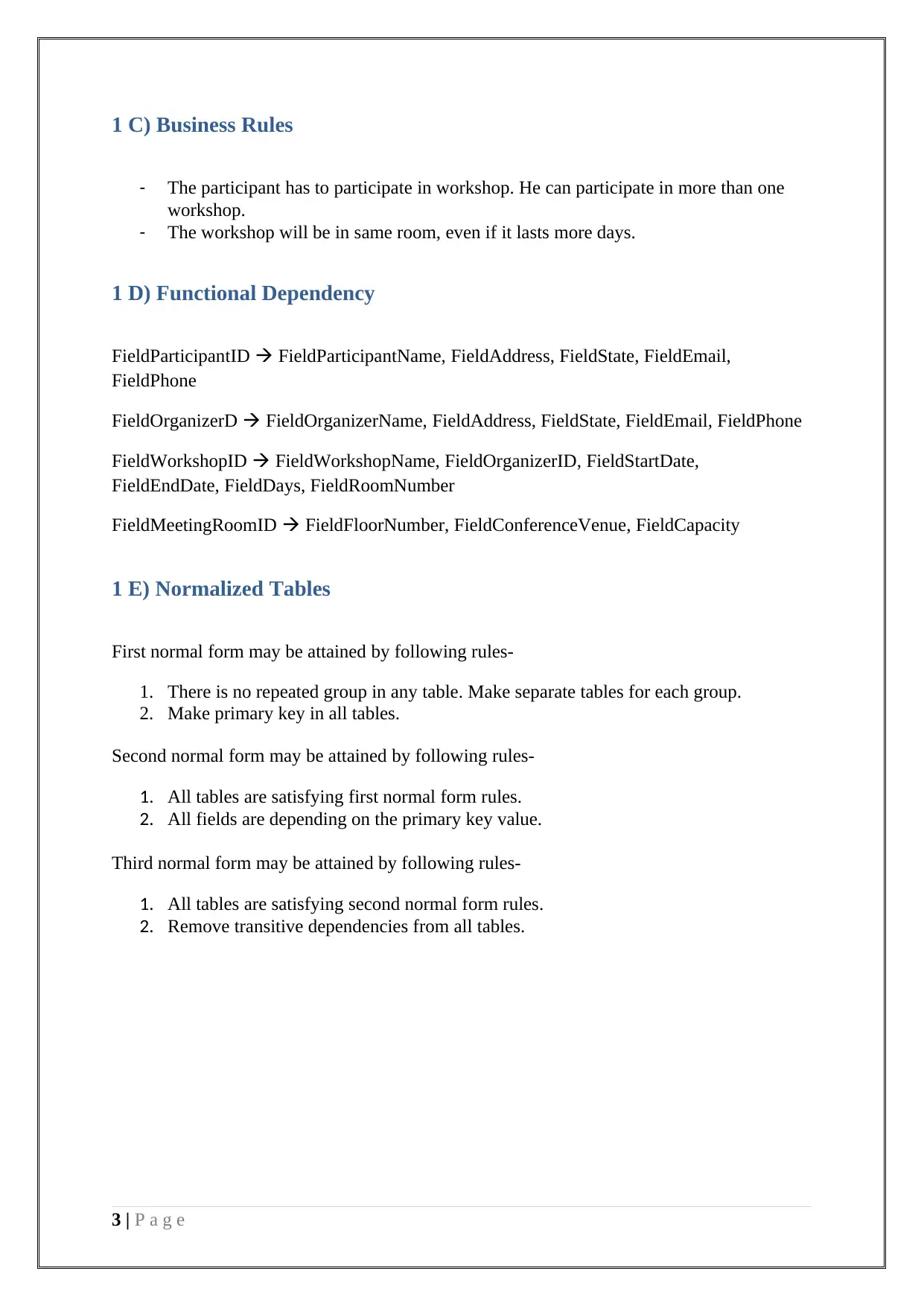
1 C) Business Rules
- The participant has to participate in workshop. He can participate in more than one
workshop.
- The workshop will be in same room, even if it lasts more days.
1 D) Functional Dependency
FieldParticipantID FieldParticipantName, FieldAddress, FieldState, FieldEmail,
FieldPhone
FieldOrganizerD FieldOrganizerName, FieldAddress, FieldState, FieldEmail, FieldPhone
FieldWorkshopID FieldWorkshopName, FieldOrganizerID, FieldStartDate,
FieldEndDate, FieldDays, FieldRoomNumber
FieldMeetingRoomID FieldFloorNumber, FieldConferenceVenue, FieldCapacity
1 E) Normalized Tables
First normal form may be attained by following rules-
1. There is no repeated group in any table. Make separate tables for each group.
2. Make primary key in all tables.
Second normal form may be attained by following rules-
1. All tables are satisfying first normal form rules.
2. All fields are depending on the primary key value.
Third normal form may be attained by following rules-
1. All tables are satisfying second normal form rules.
2. Remove transitive dependencies from all tables.
3 | P a g e
- The participant has to participate in workshop. He can participate in more than one
workshop.
- The workshop will be in same room, even if it lasts more days.
1 D) Functional Dependency
FieldParticipantID FieldParticipantName, FieldAddress, FieldState, FieldEmail,
FieldPhone
FieldOrganizerD FieldOrganizerName, FieldAddress, FieldState, FieldEmail, FieldPhone
FieldWorkshopID FieldWorkshopName, FieldOrganizerID, FieldStartDate,
FieldEndDate, FieldDays, FieldRoomNumber
FieldMeetingRoomID FieldFloorNumber, FieldConferenceVenue, FieldCapacity
1 E) Normalized Tables
First normal form may be attained by following rules-
1. There is no repeated group in any table. Make separate tables for each group.
2. Make primary key in all tables.
Second normal form may be attained by following rules-
1. All tables are satisfying first normal form rules.
2. All fields are depending on the primary key value.
Third normal form may be attained by following rules-
1. All tables are satisfying second normal form rules.
2. Remove transitive dependencies from all tables.
3 | P a g e
⊘ This is a preview!⊘
Do you want full access?
Subscribe today to unlock all pages.

Trusted by 1+ million students worldwide
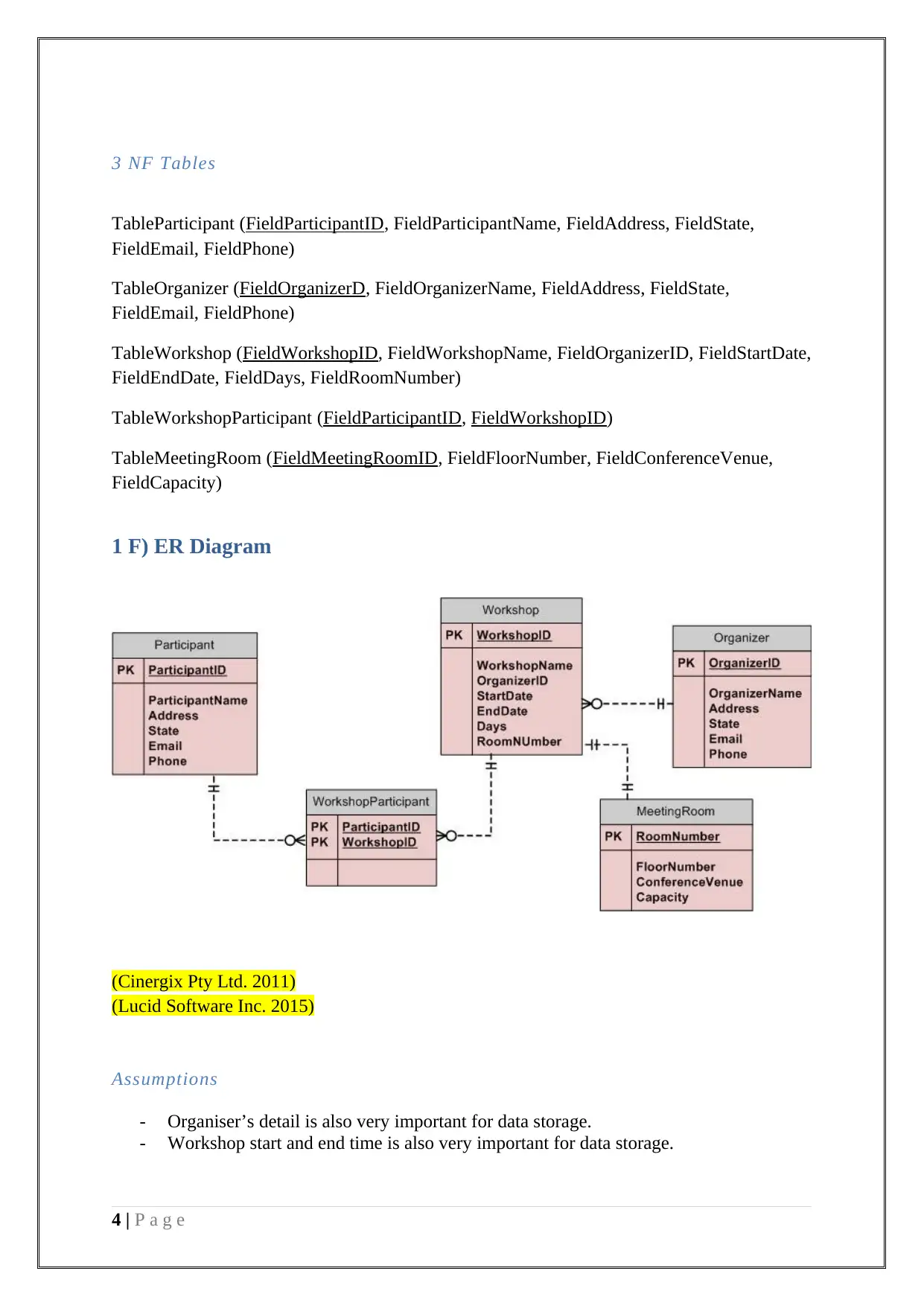
3 NF Tables
TableParticipant (FieldParticipantID, FieldParticipantName, FieldAddress, FieldState,
FieldEmail, FieldPhone)
TableOrganizer (FieldOrganizerD, FieldOrganizerName, FieldAddress, FieldState,
FieldEmail, FieldPhone)
TableWorkshop (FieldWorkshopID, FieldWorkshopName, FieldOrganizerID, FieldStartDate,
FieldEndDate, FieldDays, FieldRoomNumber)
TableWorkshopParticipant (FieldParticipantID, FieldWorkshopID)
TableMeetingRoom (FieldMeetingRoomID, FieldFloorNumber, FieldConferenceVenue,
FieldCapacity)
1 F) ER Diagram
(Cinergix Pty Ltd. 2011)
(Lucid Software Inc. 2015)
Assumptions
- Organiser’s detail is also very important for data storage.
- Workshop start and end time is also very important for data storage.
4 | P a g e
TableParticipant (FieldParticipantID, FieldParticipantName, FieldAddress, FieldState,
FieldEmail, FieldPhone)
TableOrganizer (FieldOrganizerD, FieldOrganizerName, FieldAddress, FieldState,
FieldEmail, FieldPhone)
TableWorkshop (FieldWorkshopID, FieldWorkshopName, FieldOrganizerID, FieldStartDate,
FieldEndDate, FieldDays, FieldRoomNumber)
TableWorkshopParticipant (FieldParticipantID, FieldWorkshopID)
TableMeetingRoom (FieldMeetingRoomID, FieldFloorNumber, FieldConferenceVenue,
FieldCapacity)
1 F) ER Diagram
(Cinergix Pty Ltd. 2011)
(Lucid Software Inc. 2015)
Assumptions
- Organiser’s detail is also very important for data storage.
- Workshop start and end time is also very important for data storage.
4 | P a g e
Paraphrase This Document
Need a fresh take? Get an instant paraphrase of this document with our AI Paraphraser
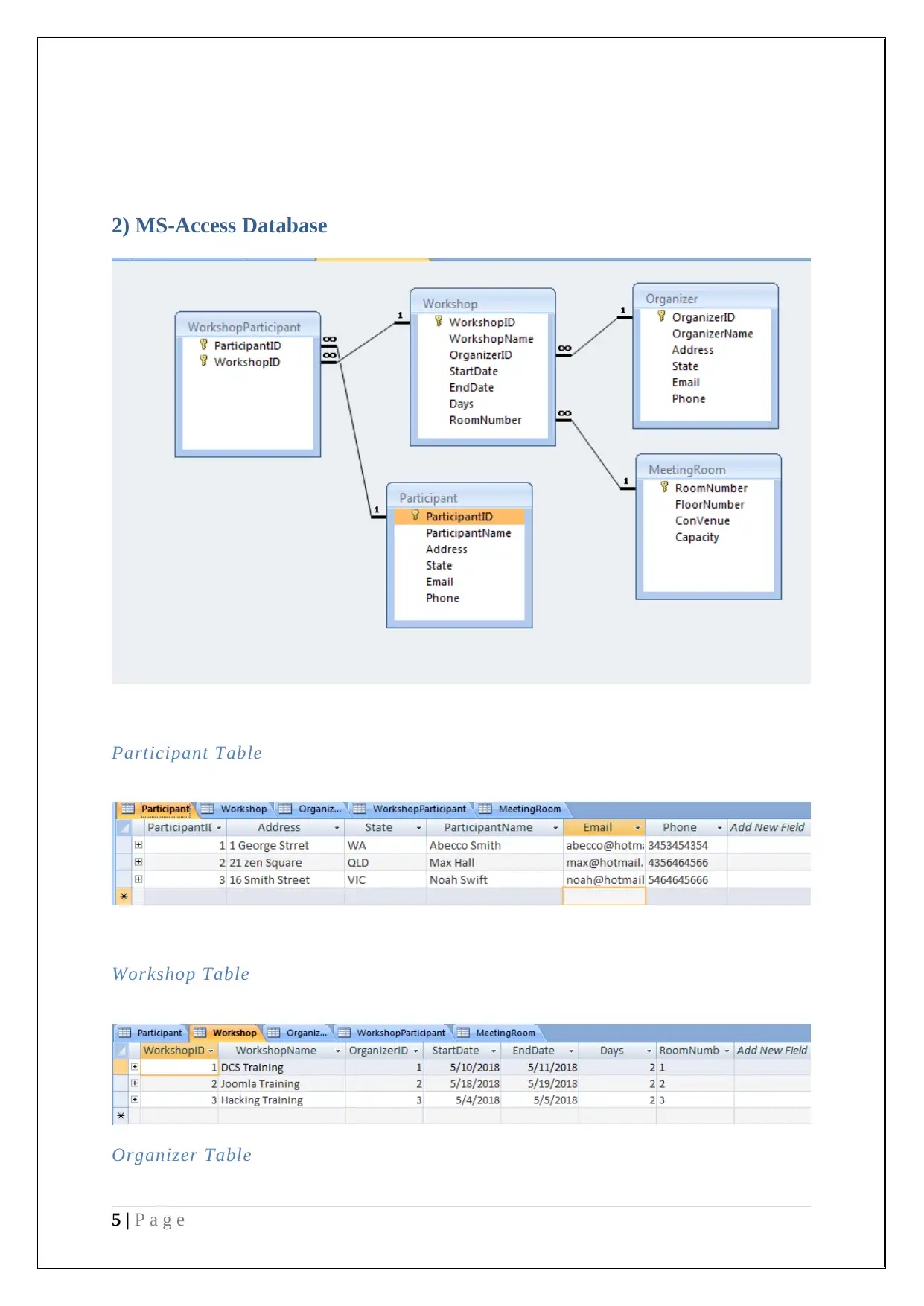
2) MS-Access Database
Participant Table
Workshop Table
Organizer Table
5 | P a g e
Participant Table
Workshop Table
Organizer Table
5 | P a g e
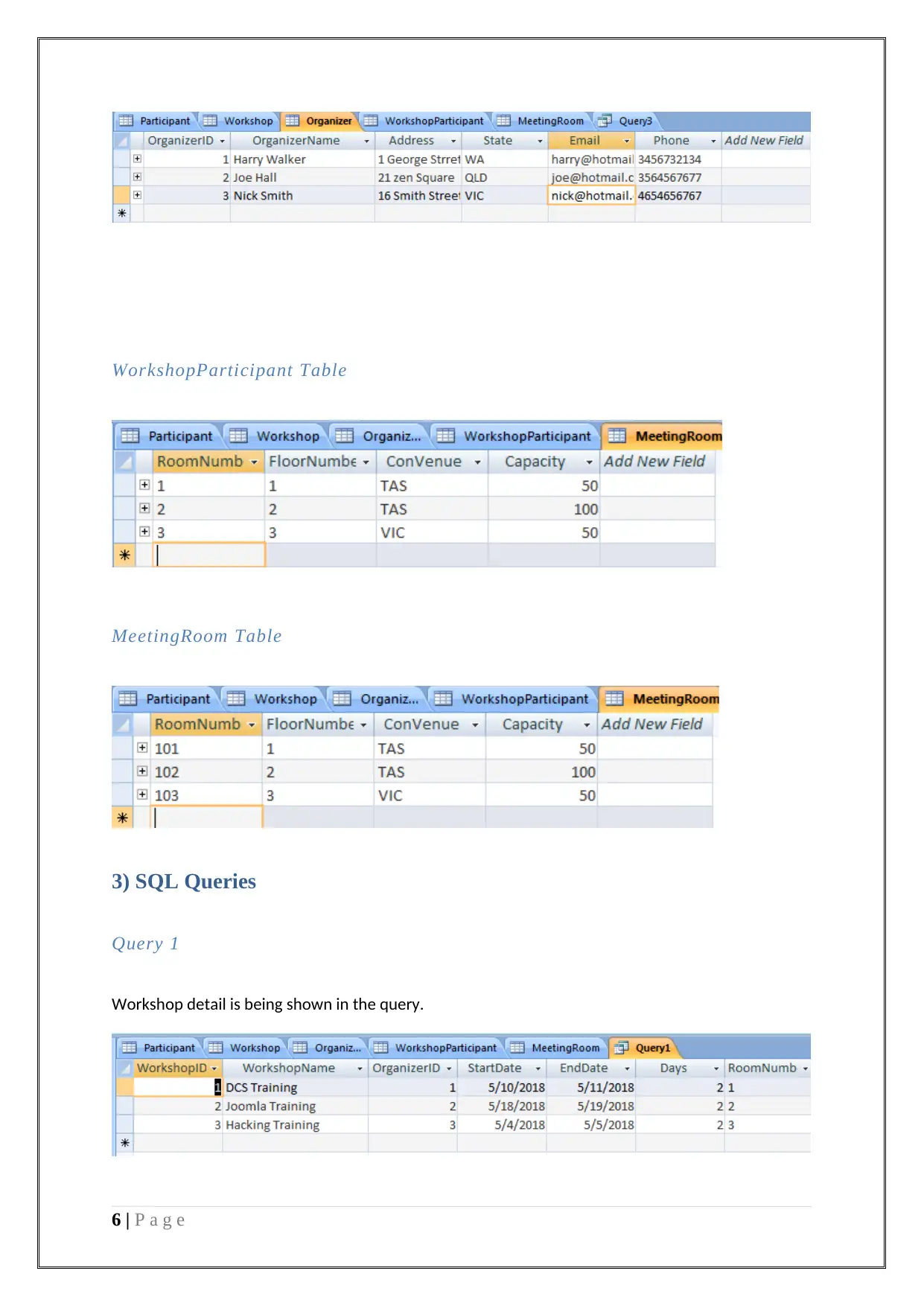
WorkshopParticipant Table
MeetingRoom Table
3) SQL Queries
Query 1
Workshop detail is being shown in the query.
6 | P a g e
MeetingRoom Table
3) SQL Queries
Query 1
Workshop detail is being shown in the query.
6 | P a g e
⊘ This is a preview!⊘
Do you want full access?
Subscribe today to unlock all pages.

Trusted by 1+ million students worldwide

Query 2
This query is showing participants who do not belong to Victoria and participated in workshop.
Query 3
This query is showing workshop detail along with room number.
7 | P a g e
This query is showing participants who do not belong to Victoria and participated in workshop.
Query 3
This query is showing workshop detail along with room number.
7 | P a g e
Paraphrase This Document
Need a fresh take? Get an instant paraphrase of this document with our AI Paraphraser
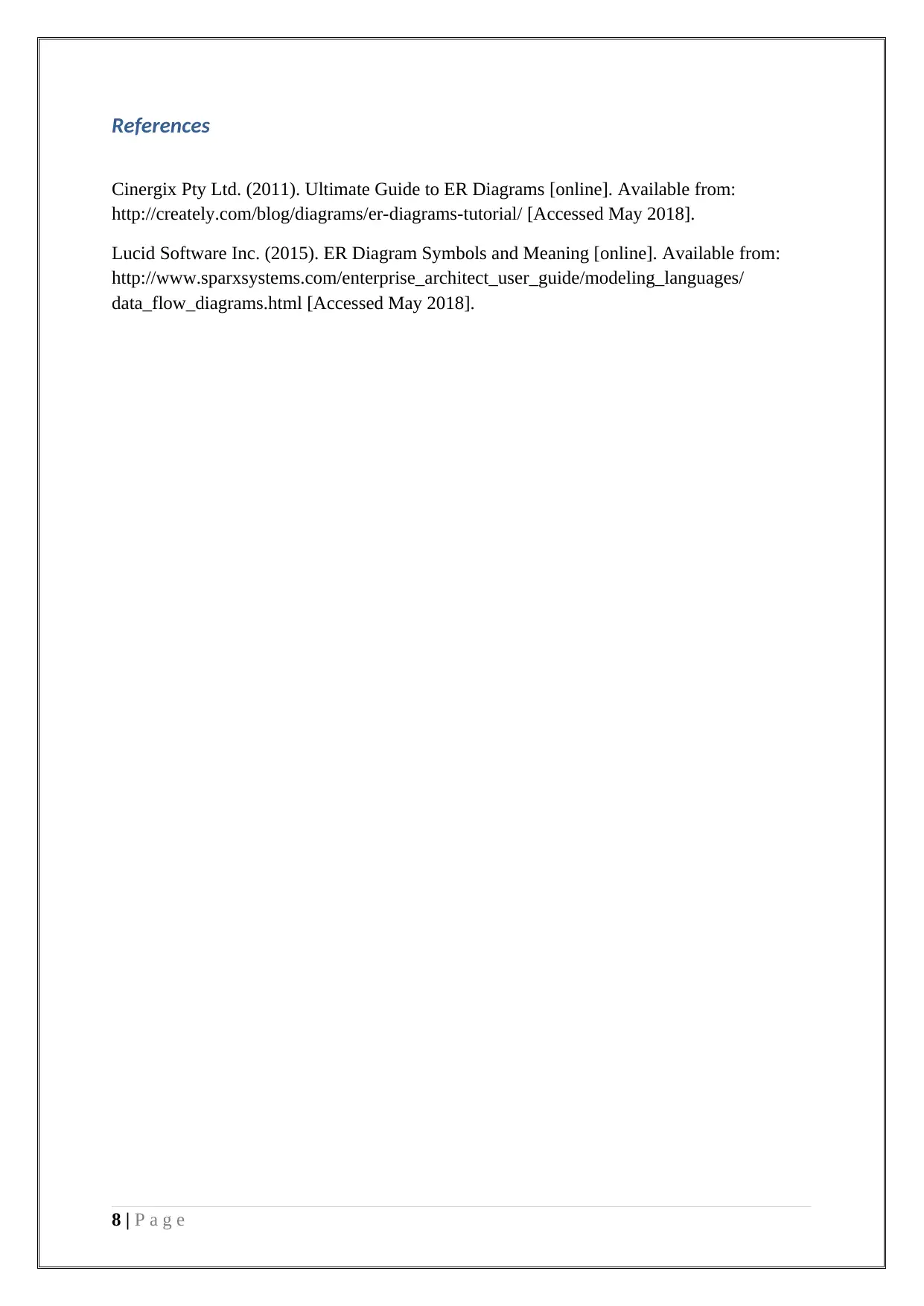
References
Cinergix Pty Ltd. (2011). Ultimate Guide to ER Diagrams [online]. Available from:
http://creately.com/blog/diagrams/er-diagrams-tutorial/ [Accessed May 2018].
Lucid Software Inc. (2015). ER Diagram Symbols and Meaning [online]. Available from:
http://www.sparxsystems.com/enterprise_architect_user_guide/modeling_languages/
data_flow_diagrams.html [Accessed May 2018].
8 | P a g e
Cinergix Pty Ltd. (2011). Ultimate Guide to ER Diagrams [online]. Available from:
http://creately.com/blog/diagrams/er-diagrams-tutorial/ [Accessed May 2018].
Lucid Software Inc. (2015). ER Diagram Symbols and Meaning [online]. Available from:
http://www.sparxsystems.com/enterprise_architect_user_guide/modeling_languages/
data_flow_diagrams.html [Accessed May 2018].
8 | P a g e
1 out of 8
Related Documents
Your All-in-One AI-Powered Toolkit for Academic Success.
+13062052269
info@desklib.com
Available 24*7 on WhatsApp / Email
![[object Object]](/_next/static/media/star-bottom.7253800d.svg)
Unlock your academic potential
Copyright © 2020–2025 A2Z Services. All Rights Reserved. Developed and managed by ZUCOL.





